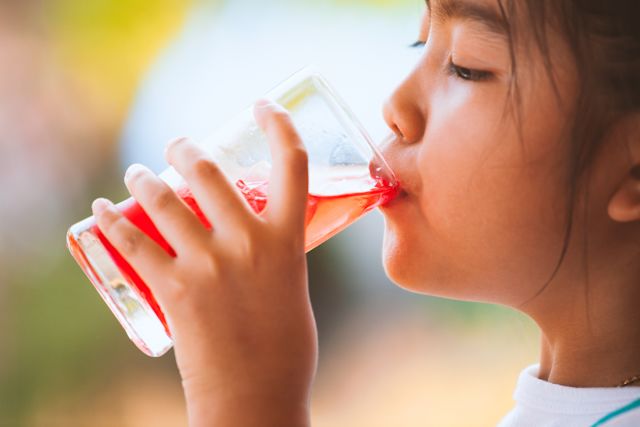Updated on November 20, 2024.
According to the Centers for Disease Control and Prevention (CDC), about 14.7 million children and adolescents in the United States—or about one in five kids—have obesity. The numbers are even higher in some groups, such as kids in lower-income families, Hispanic children, and non-Hispanic Black children. And the older kids get, the more they’re likely to have obesity, with 12.7 percent of kids two to five years old with obesity compared to 22.2 percent of kids ages 12 to 19.
These numbers have trended upward over time. According to a 2022 review published in the journal The Lancet Diabetes and Endocrinology, since 1975, obesity in children around the world has risen by more than 700 percent.
What’s behind the rise in childhood and adolescent obesity?
Many factors have worked together to contribute to this rise in kids with obesity, from public policies, to the media to the built environment, the school community, diabetes during pregnancy, and dietary factors.
Two of the biggest dietary culprits are sugar-sweetened beverages and foods that are high in fat and sugar but low in nutrients, like fast foods and junk foods. According to the 2014 documentary film Fed Up, the problems began 40 years ago with the growing demand for low-fat foods. That led to many food manufacturers replacing the unwanted fat in processed foods with added sugar to make fat-free products taste great.
On average, about 17 percent of what kids eat and drink each day is sugar, which is especially jarring when you consider that sugar contains no nutrients, only calories.
There is some good news, however. According to a 2022 study published in the Journal of Nutrition, consumption of added sugars went down by three to four percent for kids between 2001 and 2018. A lot of this decrease is due to kids drinking lower volumes of sweetened beverages. Still, the numbers remain much too high.
How much is too much added sugar?
According to the American Academy of Pediatrics, kids should be getting a maximum of 25 grams of added sugar each day—that’s about six teaspoons’ worth. Foods and drinks with added sugar should be avoided in children under age 2. Kids for whom liquid added sugars make up more than 10 percent of their daily caloric intake are at greater risk of having high cholesterol and developing type 2 diabetes.
In addition to sugary drinks, processed foods tend to be full of hidden added sugars. They aren’t always obvious, either. Besides brown sugar and raw sugar, ingredients that are sugars include lactose, honey, corn syrup, malt syrup, sucrose, maltose, and molasses. High amounts of added sugars are hiding in everyday foods like ketchup, salad dressing, and canned baked beans.
Addicted to sugar
A sugar addiction is what’s driving the nation’s childhood obesity problem, says pediatric nutritionist Deb Kennedy, PhD, co-author of Beat Sugar Addiction Now! For Kids and founder of the “Build Healthy Kids” nutrition program.
“Excess sugar is more dangerous for kids than excess fat, non-organic foods, or genetically modified foods.” Kennedy adds that the diet of children in the United States is awash in sugar – including mainstays such as juice, chocolate milk, sugary cereals, soda, candy, and cookies, along with the added sugars and corn syrup in processed and fast foods.
Research shows that refined sugar is addictive and affects the brain much like a drug—by stimulating the brain’s pleasure centers.
“Sugar addicts crave it, and suffer withdrawal symptoms when they don’t get enough. They have to eat more and more to get the same pleasure pay-off, and after a binge there’s a big, hard crash,” Kennedy says. “Those are clear addictive patterns.”
Most people have no idea how addicted they are, or how much added sugar is in unexpected foods, like jarred spaghetti sauce, Kennedy says.
“I’ve worked with parents who say, ‘Oh, my kid likes savory foods. Excess sweets aren’t the problem,’ but when I sit down and add up a day’s worth of added sugar, they’re shocked.”
Tips for cutting down added sugars
So how can you avoid added sugars? Try the “slow and steady wins the race” approach, advises Kennedy. Here are some suggestions:
Start by limiting liquid sugars. Cut back on juice, sweetened water, sodas, and energy drinks. The American Academy of Pediatrics (AAP) advises children between ages one and three should limit naturally sweetened juice drinks to four ounces each day. Older kids can have six to eight ounces. Cut out all drinks with added or artificial sugars.
Track added sugar. Start by reading food labels. Limit all added sugars, especially for kids. Four grams of sugar is about the same as one teaspoon. Kids ages two to 18 should have no more than 25 grams (about six teaspoons) of sugar each day. Adults should not have more than 10 percent of their calories from sugar. With a 2,000-calorie a day diet, that means 200 calories max should come from added sugars, or 12 teaspoons.
Focus on one healthy change at a time. Spend a month adding in vegetables. Next month, cut back on unhealthy treats. Focus on achievable goals, and start adding to them over time.
Don’t replace table sugar with artificial or “natural" sweeteners. Forget honey or agave. “Sugar is sugar is sugar, and the bottom line is too much is too much.” And artificial sweeteners train your tastebuds to want more sugar.
Allow kids one small treat each day. “Completely eliminating treats only makes children crave them more,” Kennedy says. But be careful not to associate the treat with good behavior—the United States Food and Drug Administration advises against using sugar as a reward for kids.
Take the Fed Up challenge: Try eliminating all added sugar from your diet for just 10 days. Kennedy says you’ll be surprised how great you’ll feel.







